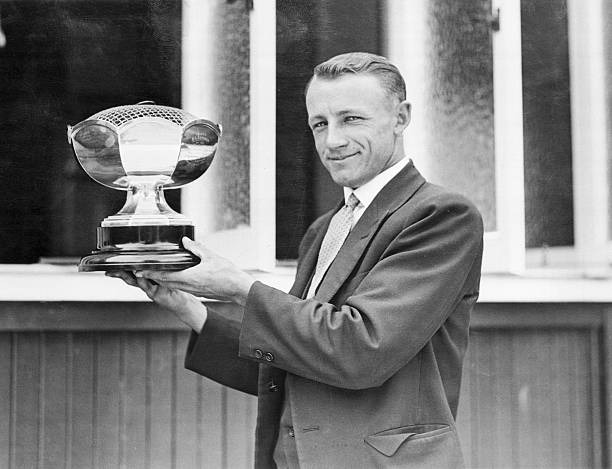Cricket has seen legends, but none like Sir Don Bradman. A name synonymous with perfection, Bradman’s career redefined batting excellence and left a legacy so profound that modern players are still measured against his yardstick. How did a boy from rural Australia become the greatest cricketer of all time? Let’s unravel the story of the man who turned statistics into poetry and ambition into immortality.
The Unmatched Legacy of Sir Don Bradman
Sir Don Bradman, often called “The Don,” wasn’t just a cricketer—he was a phenomenon. Born in 1908 in Cootamundra, Australia, Bradman’s rise from backyard practice with a stump and golf ball to international stardom is the stuff of folklore. His career spanned 20 years (1928–1948), during which he rewrote record books and set standards deemed unachievable.
Bradman’s influence transcends numbers. He became a symbol of resilience during the Great Depression and a national hero post-World War II. But it’s his jaw-dropping statistics that anchor his legend.
Sir Don Bradman’s Astonishing Career Statistics
Test Cricket Dominance: A Statistical Overview
Bradman played 52 Test matches, scoring 6,996 runs at an average of 99.94—a figure that towers over modern greats like Sachin Tendulkar (53.78) and Steve Smith (60.00). To put this in perspective, if Bradman had scored just four more runs in his final innings, he’d have averaged 100.
- Highest Score: 334 vs. England, 1930 (surpassed only by Lara’s 400 in 2004).
- Centuries: 29 hundreds in 80 innings—a 36% conversion rate.
- Strike Rate: Estimated at 60-70 in Tests (remarkable for the pre-limited-overs era).
The Elusive ODI Average: A Historical Context
Bradman never played One-Day Internationals (ODIs debuted in 1971), but scholars project his potential average. Using his Test strike rate and consistency, experts speculate he’d have averaged 65-75 in ODIs—a number that redefines “GOAT” status.

Breaking Down Bradman’s Batting Mastery
Technique: The Art of Simplicity
Bradman’s technique was unorthodox. He relied on lightning-fast footwork, a vertical bat swing, and an uncanny ability to read bowlers. His iconic “pull shot” became a weapon against bodyline tactics in the 1932-33 Ashes.
The 99.94 Mystery: A Heartbreaking Finale
In his last Test innings, Bradman needed just four runs to secure a 100 average. He was bowled for a duck, leaving his average at 99.94—a number etched into cricket’s soul.
The Myth and Reality of Bradman’s Jersey Number
A common myth claims Bradman wore jersey number 23. However, jersey numbers weren’t used in Test cricket during his era. The confusion stems from a 1990s marketing campaign, but Bradman’s identity remains tied to his cream flannel cap and baggy green—not digits.
Bradman’s Strike Rate: Ahead of His Time
While strike rate (runs per 100 balls) wasn’t tracked in Bradman’s day, analysts estimate his rate at 60-70 in Tests. For context, modern Test stars like Ben Stokes average 60. Bradman’s aggressive style—hitting 618 boundaries in Tests—proved entertainment and efficiency coexist.
How Sir Don Bradman Shaped Modern Cricket
Tactical Innovations
Bradman’s success forced England to invent the controversial “bodyline” tactic—directing short balls at batsmen’s bodies. While brutal, it highlighted Bradman’s psychological edge.
Inspiring Generations
From Ricky Ponting to Virat Kohli, Bradman’s work ethic and focus remain a blueprint. His autobiography, The Art of Cricket, is still a guide for aspiring players.
Keeping Bradman’s Legacy Alive
Museums and Honors
- Bradman Museum (Bowral, Australia): Houses his bats, letters, and the iconic 1948 “Invincibles” collection.
- Knighthood (1949): Recognized for services to cricket.
In Pop Culture
Bradman’s life inspired films, books, and even a Google Doodle (2008). His name is slang for excellence—e.g., “The Bradman of chess.”
FAQs About Sir Don Bradman
Q: What was Don Bradman’s highest score?
A: 334 vs. England in 1930—a record that stood for 29 years.
Q: Did Bradman ever play ODIs?
A: No. ODIs began in 1971, long after his retirement.
Q: Why is 99.94 significant?
A: It’s Bradman’s Test average, reflecting near-flawless consistency.
Conclusion: The Eternal Benchmark
Sir Don Bradman didn’t just play cricket; he perfected it. His stats defy logic, his legacy inspires generations, and his story proves that greatness isn’t just about talent—it’s about obsession. As cricket evolves, Bradman’s 99.94 remains the North Star, a reminder that even in an era of analytics, some legends are timeless.




Pingback: Alfredo Di Stéfano: The Architect of Modern Football’s Golden Era